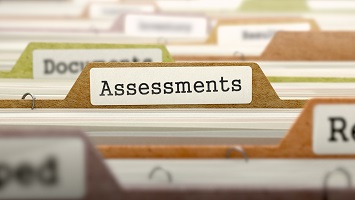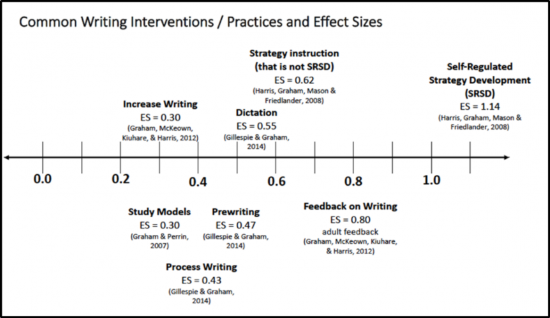I recently traveled to San Francisco to hear Dean Fixsen, founder of the National Implementation Research Network (NIRN), deliver a keynote address on Implementation Science. During my flight there I had a birds-eye view to our country’s diversely beautiful landscape — green fields blooming with this season’s crops and brown canyons that reminded me of those that Evel Knievel attempted to jump on his motorcycle. As I listened to Fixsen I reflected on how that landscape was a perfect metaphor for the importance of paying attention to implementation drivers during school improvement.
Fixsen noted the last 50 years of national educational reform efforts have had an effect size of zero on student outcomes. He attributed this to both the ineffective implementation of effective practices and the effective implementation of ineffective practices. Fixsen discussed how a research-to-practice gap plagues special education and assured us that we have lots of knowledge. We have the research and know what works. We also know the evidence-based practices (EBPs), that is, what to do. The gap is the to — we’re not getting to implementation. In fact, we are not facing an implementation gap but a chasm with sharp peaks and overwhelming depths. Until we apply the same intentionality to implementation that we assign to conducting research and identifying practice, Fixsen said, we will continue to experience the same outcomes. Failure to address implementation as we work to improve student outcomes is tantamount to hoping Evel Knievel would land his motorcycle on the other side of the canyon, and instead watching him fall back off the ledge. We must no longer hurl research about practices across the canyon but strategically build the structures to support implementation of those practices and improved student outcomes.
One example of effective implementation is PBIS (Positive Behavioral and Intervention Supports). Since 1997, PBIS implementation has increased nationally from 1,000 schools to approximately 21,000 schools. Fixsen and Blase (2008) deem PBIS the most scaled-up EBP in the human services field. They attribute this to three factors: 1) PBIS implementation has consistently improved student academic, behavioral, and social-emotional outcomes; 2) the school-wide PBIS framework includes specific implementation processes; and 3) PBIS is generalizable for all students and all settings. PBIS has not flourished by chance, it has flourished because it privileges implementation structures.
You and your team might be thinking about newly implementing an EBP next school year. Start with Sugai’s Law (see School Tool on page 3) and read Implementation Research: A Synthesis of the Literature (Fixsen, Naoom, Blase, Friedman, & Wallace, 2005). If we focus on implementation we will build the bridge, and stop jumping motorcycles across the canyons. Instead we will strategically walk over vibrant fields to improve our students’ outcomes and realize their dreams. If we build it, they will come.
References
Fixsen, D. L. (2016, March). Evidence-based implementation of evidence-based innovation: Scaling positive outcomes in human services systems. Paper presented at the 13th International Conference on Positive Behavior Support, San Francisco, CA.
Fixsen, D. L. & Blase, K. A. (2008, March). Implementation: The secret to using science in human service settings. Paper presented at the Fifth International Conference on Positive Behavior Support, Chicago, IL.
Fixsen, D. L., Naoom, S. F., Blase, K. A., Friedman, R. M., & Wallace, F. (2005). Implementation research: A synthesis of the literature. Tampa, FL: University of South Florida, Retrieved from http://nirn.fpg.unc.edu/sites/nirn.fpg.unc.edu/files/resources/NIRN-MonographFull-01- 2005.pdf
Sugai, G. (2015, June). How are PBIS and ISF related to emotional wellness? Paper presented at Interconnected Systems: Bringing Together School and Community to Improve Outcomes for all Students, White Plains, NY. Retrieved from http://www.pbis.org/Common/Cms/files/pbisresources/Overview%20ISF%209%20Jun% 202015%20HAND.pdf




 Data-Driven Decision-Making
Data-Driven Decision-Making  Increasing Post-School Success through Interagency Collaboration
Increasing Post-School Success through Interagency Collaboration  How Can We Improve Deeper Learning for Students with Disabilities?
How Can We Improve Deeper Learning for Students with Disabilities?  Positive Classroom Management: Creating an Environment for Learning
Positive Classroom Management: Creating an Environment for Learning  Self-Determination Skills Empower Students of All Ages
Self-Determination Skills Empower Students of All Ages  Fidelity of Implementation: What is it and Why does it Matter?
Fidelity of Implementation: What is it and Why does it Matter?  Rethinking Classroom Assessment
Rethinking Classroom Assessment  A Three-Step Approach to Identifying Developmentally Appropriate Practices
A Three-Step Approach to Identifying Developmentally Appropriate Practices  Transforming Evidence-Based Practices into Usable Innovations: A Case Study with SRSD
Transforming Evidence-Based Practices into Usable Innovations: A Case Study with SRSD